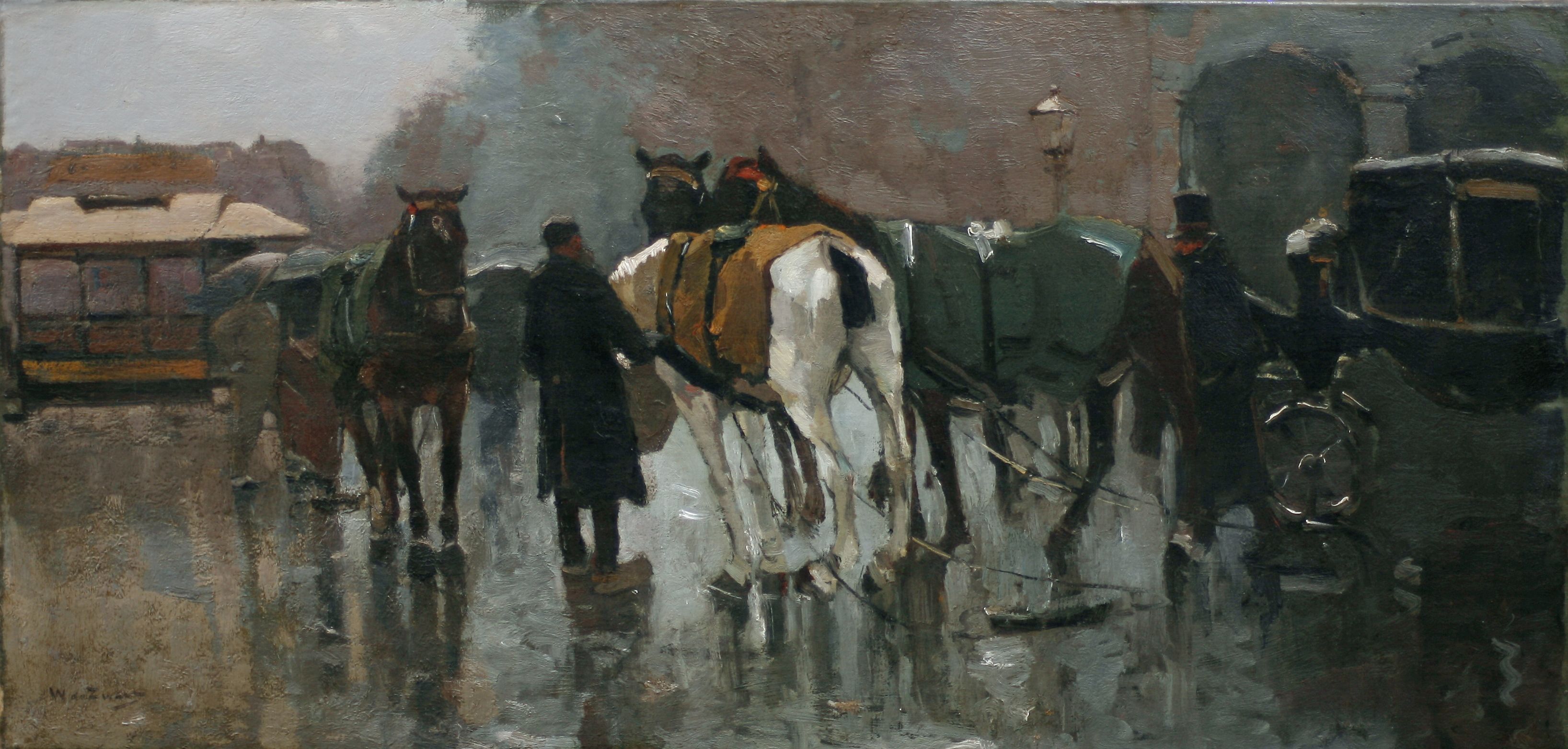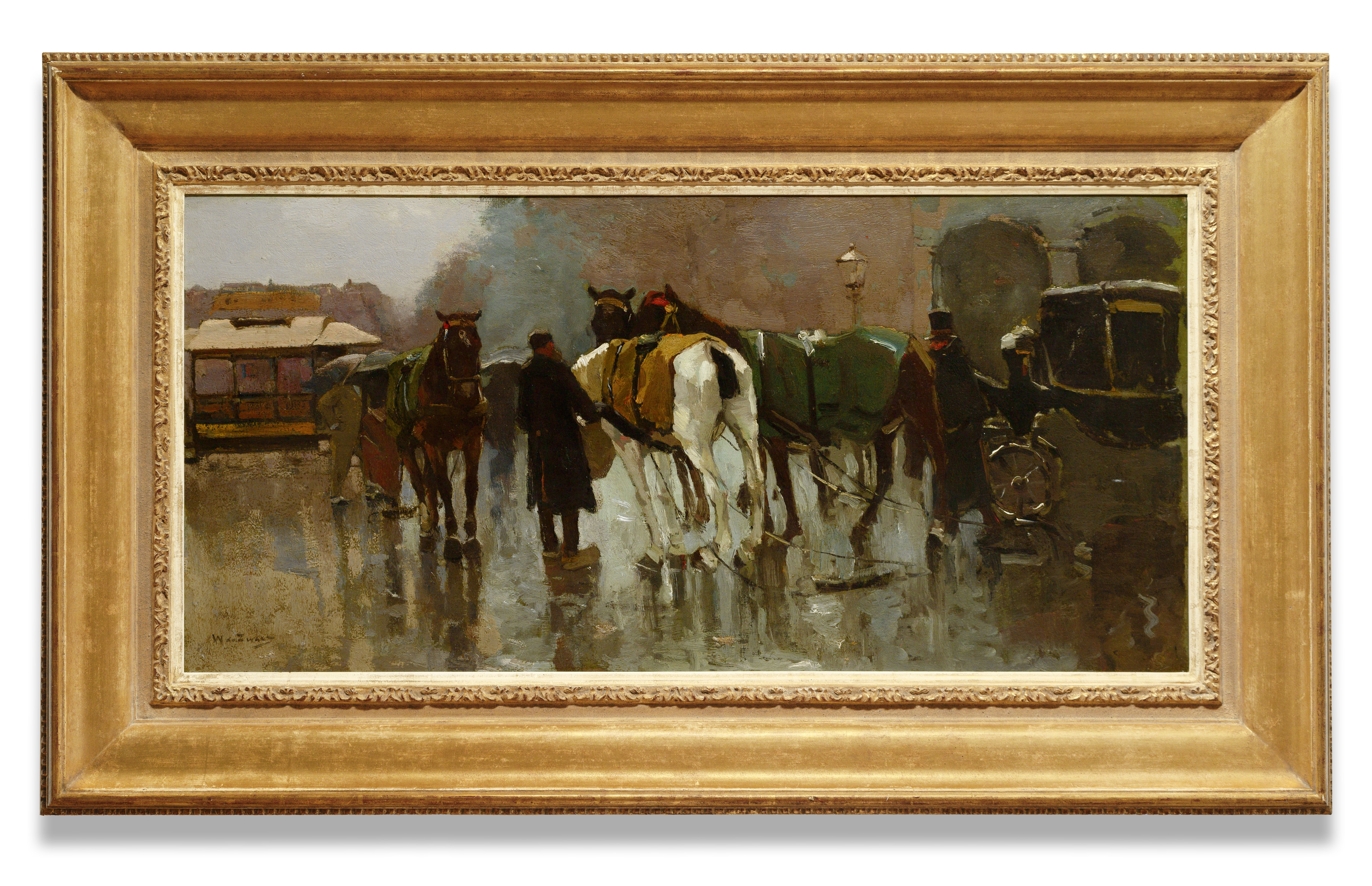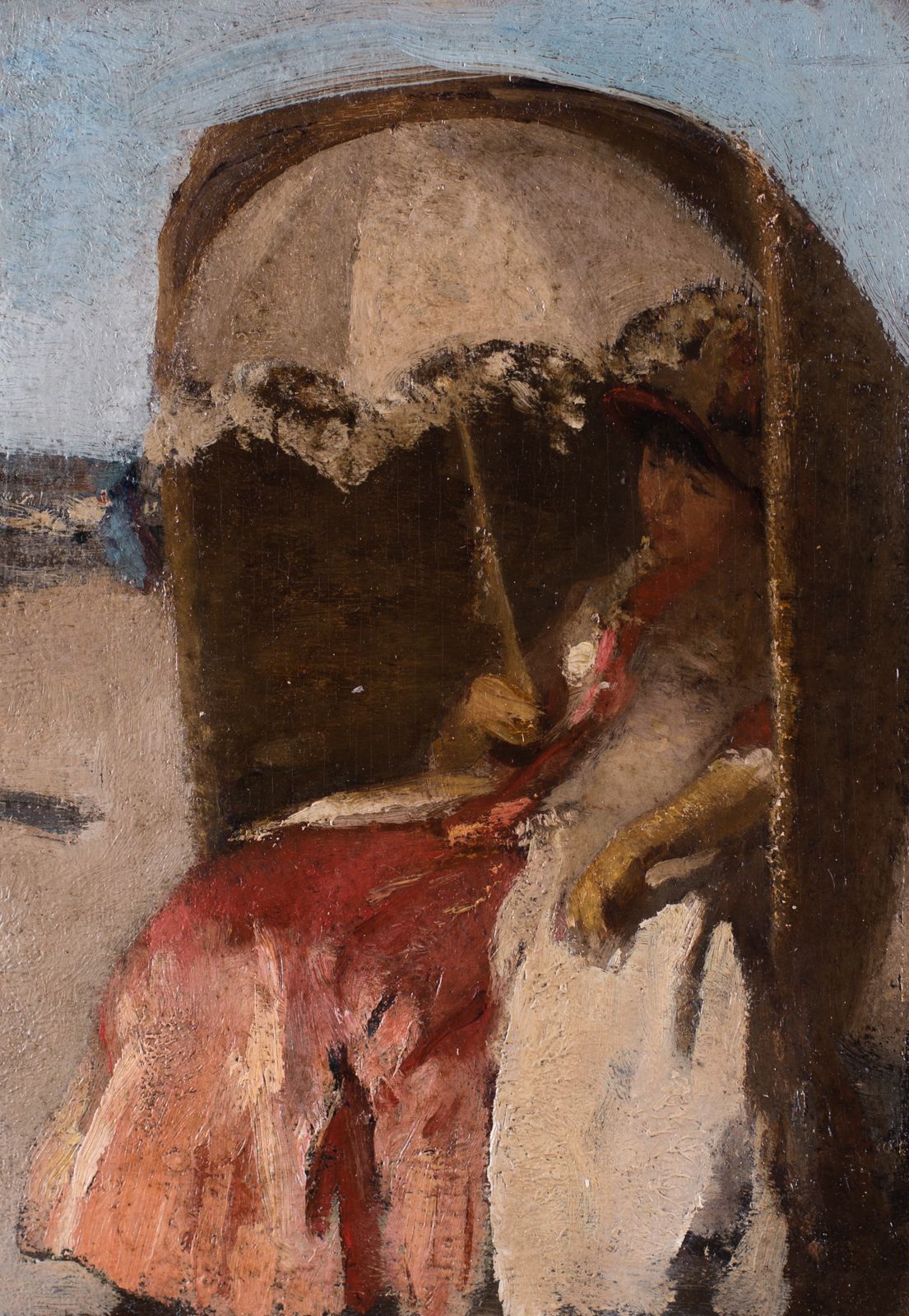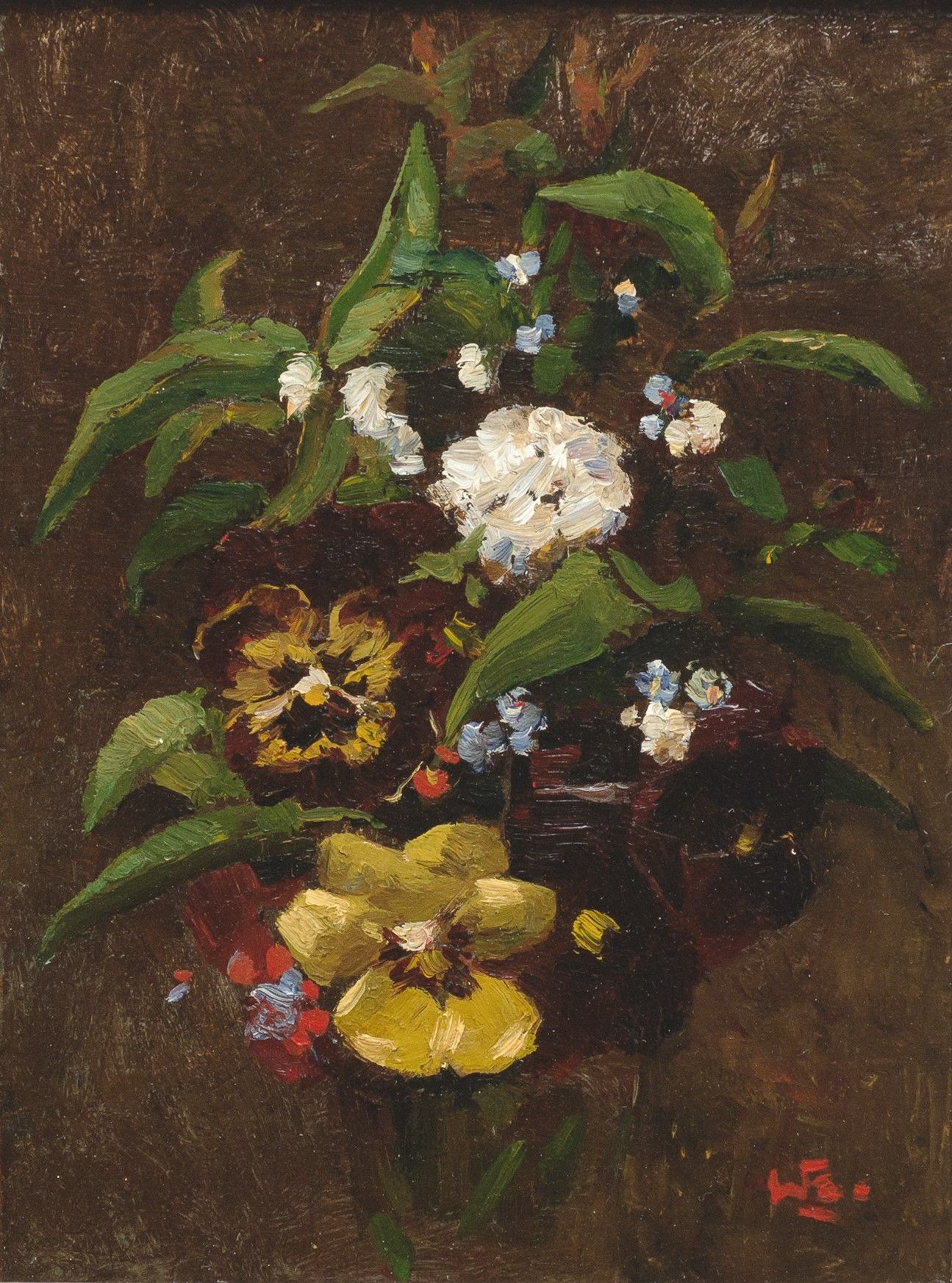W.H.P.J. (WILLEM) DE ZWART 1862 The Hague (The Netherlands) - 1931 The Hague (The Netherlands) Rest Time for the Horses - Squally Weather on the Buitenhof in The Hague
Oil / Canvas: 47 x 97 cm
- This artwork can be viewed in our gallery
- Call us for more information: +31 26 361 1876
- World wide shipping available
Height: 47 cm
Collection J. Hageraats [see 1924-1942], Amsterdam
Collection Boerma (bougt 1950 ca. at Hageraats Boerma, then inherited to the children)
'Honderd jaar Nederlandsche schilderkunst", Haags Gemeentemuseum, August - September 1942, cat.no. 120 'Trampaarden'(J. Hageraats, Den Haag)
'Suze Robertson en Willem de Zwart', Haags gemeentemuseum, 30 January - 29 February 1932, cat.no. 78 'Aapjeskoetsiers Buitenho'(J. Hageraats, Amsterdam)
'Eere-tentoonstelling Willem de Zwart', Villa Erica, The Hague, May - June 1910, cat. no. 45 Áapjeskoetsiers Buitenhof' with illustration (J. Hageraats, Den Haag)
Nieuwe Rotterdamsche Courant, 17 January 1924
Het Vaderland, ‘Kunsthandel Hageraats’, 2 September 1942
‘Suze Robertson en Willem de Zwart. Twee boeiende overgangsfiguren’
Over W.H.P.J. (WILLEM) DE ZWART
Willem de Zwart grew up in a modest family. His father was a painter of carriages, and after high school young Willem was apprenticed to him. It is probably from here that his interest in carriages and horses was born. Meanwhile, he proved to be a talent for drawing and joined the studio of Jacob Maris, who took him into his care. In the line of Maris, De Zwart developed into a painter of landscapes and cityscapes, but was also a painter of figures, animals and still lifes. During these formative years, De Zwart entered the thriving artist circles of the last decades of the 19th century and met Willem Tholen, Suze Robertzon and Isaac Israels, among others. He worked with George Breitner for some time and he learned how to work with contrasting colors by working with him. In 1889, de Zwart settled with his young family on Beeklaan on the border of Loosduinen near The Hague. The Beeklaan turned out to be a true painters' colony where many representatives of the Hague School had taken up residence. In the Loosduinse and Beeklaan years, important works by de Zwart were created. His work gained increasing recognition, also internationally. In 1896 de Zwart began working on a contract basis on behalf of the Amsterdam art dealer van Wisselingh, where his work was regularly shown until 1910. Willem de Zwart was a restless man who would move much in his life. His melancholic nature was not helpful to the restlessness. However, his paintings became increasingly colorful as he grew older. He remained a sociable man who was member of several artists' associations. His work can be found in several important museums in the Netherlands, Belgium and in large private collections.



